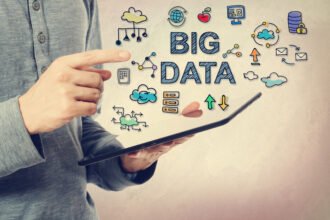This week, my co-author Joey and I will be speaking at innovation events. Our speeches will explore the role that analytics play with innovation.
More specifically, we will attempt to start a conversation around the below items:
1) Where does innovation come from?
2) What context is required for effective innovation measurement? (strategy, culture, people?)
3) How can you best measure innovation?
The subject can be controversial. We will argue that innovation is a process, rather than an event, and that an appropriate culture needs to be fostered in order to increase innovation across the entire organization.
Our research shows that innovative cultures rest on the proper incentives, of course, but that acceptance plays a big role. By acceptance, I mean the constant search for feedback (rather than just the tolerance) and leadership’s commitment to empower all individuals to experiment, make mistakes quickly and cheaply and learn from them. When this happens, incredible results can be gained: I recently discussed these concepts at a conference in Canada (see my video-blog on this at http://www.tinyurl.com/got-insights). There …
This week, my co-author Joey and I will be speaking at innovation events. Our speeches will explore the role that analytics play with innovation.
More specifically, we will attempt to start a conversation around the below items:
1) Where does innovation come from?
2) What context is required for effective innovation measurement? (strategy, culture, people?)
3) How can you best measure innovation?
The subject can be controversial. We will argue that innovation is a process, rather than an event, and that an appropriate culture needs to be fostered in order to increase innovation across the entire organization.
Our research shows that innovative cultures rest on the proper incentives, of course, but that acceptance plays a big role. By acceptance, I mean the constant search for feedback (rather than just the tolerance) and leadership’s commitment to empower all individuals to experiment, make mistakes quickly and cheaply and learn from them. When this happens, incredible results can be gained: I recently discussed these concepts at a conference in Canada (see my video-blog on this at http://www.tinyurl.com/got-insights). There is a lot of research on this topic from the great work of late C.K. Prahalad to Jim Carroll, Edward de Bono and many others.
In fact, I had the opportunity to meet Geoffrey Moore a few months ago and discuss his point of view on innovation at the core, and his thoughts on competitive differentiation and innovation. If you are not familiar with his work on innovation, take a look at his “Top 10 Innovation Myths” article and comment @ http://ow.ly/1FYcd – it’s a great read!
Given that many of the readers of this blog are experts in the areas of decision making and information management, I can’t help but ask:
1) In your mind, what is the role of analytics in innovation?
2) How would you measure innovation in a way that does not constrain the creative mind of your employees?
Join the conversation! go to @ http://tinyurl.com/innovation-analytics
Best,
Bruno Aziza
Co-Author, Drive Business Performance
On twitter @brunoaziza
On Facebook @ http://tinyurl.com/bruno-on-facebook








